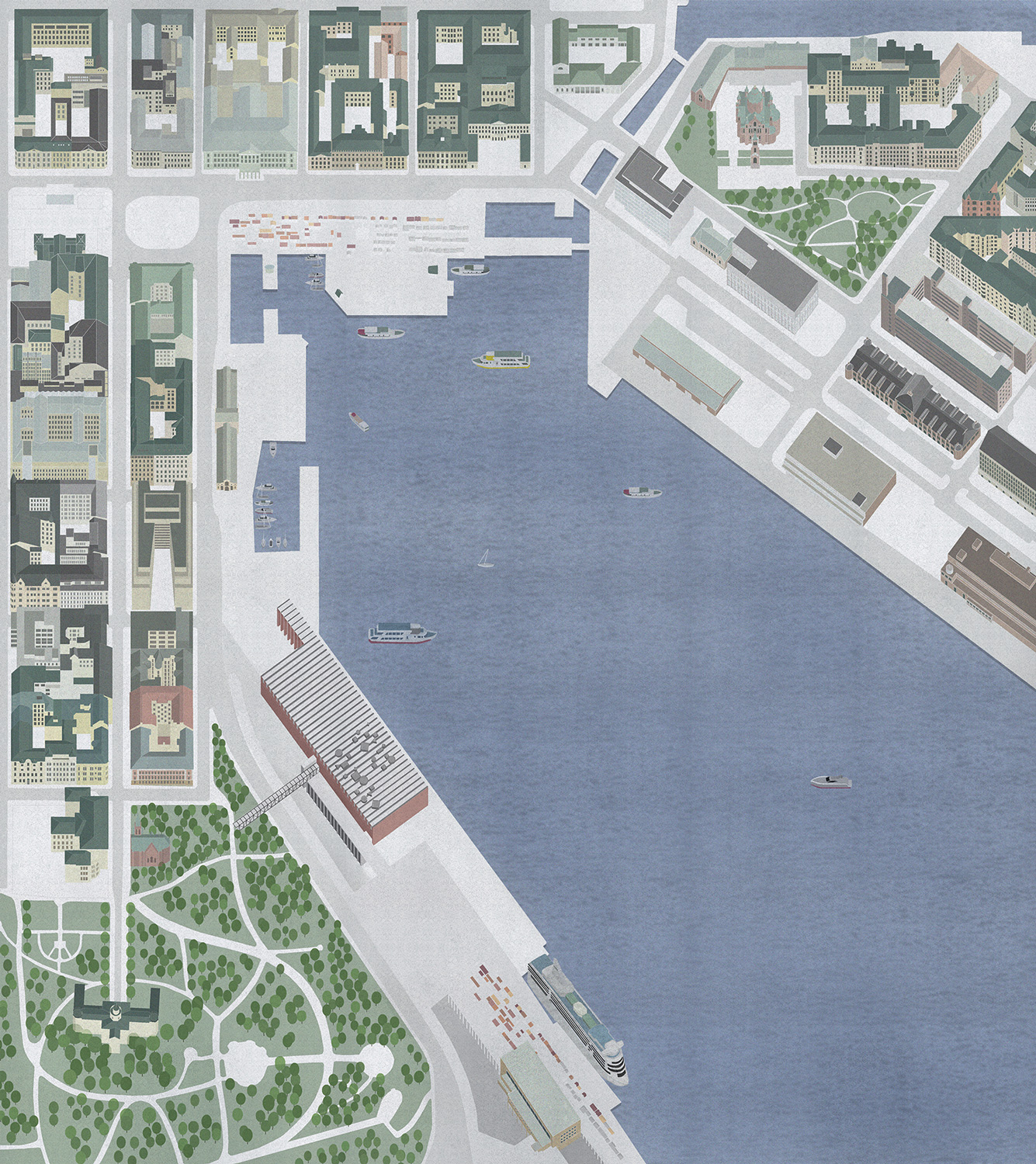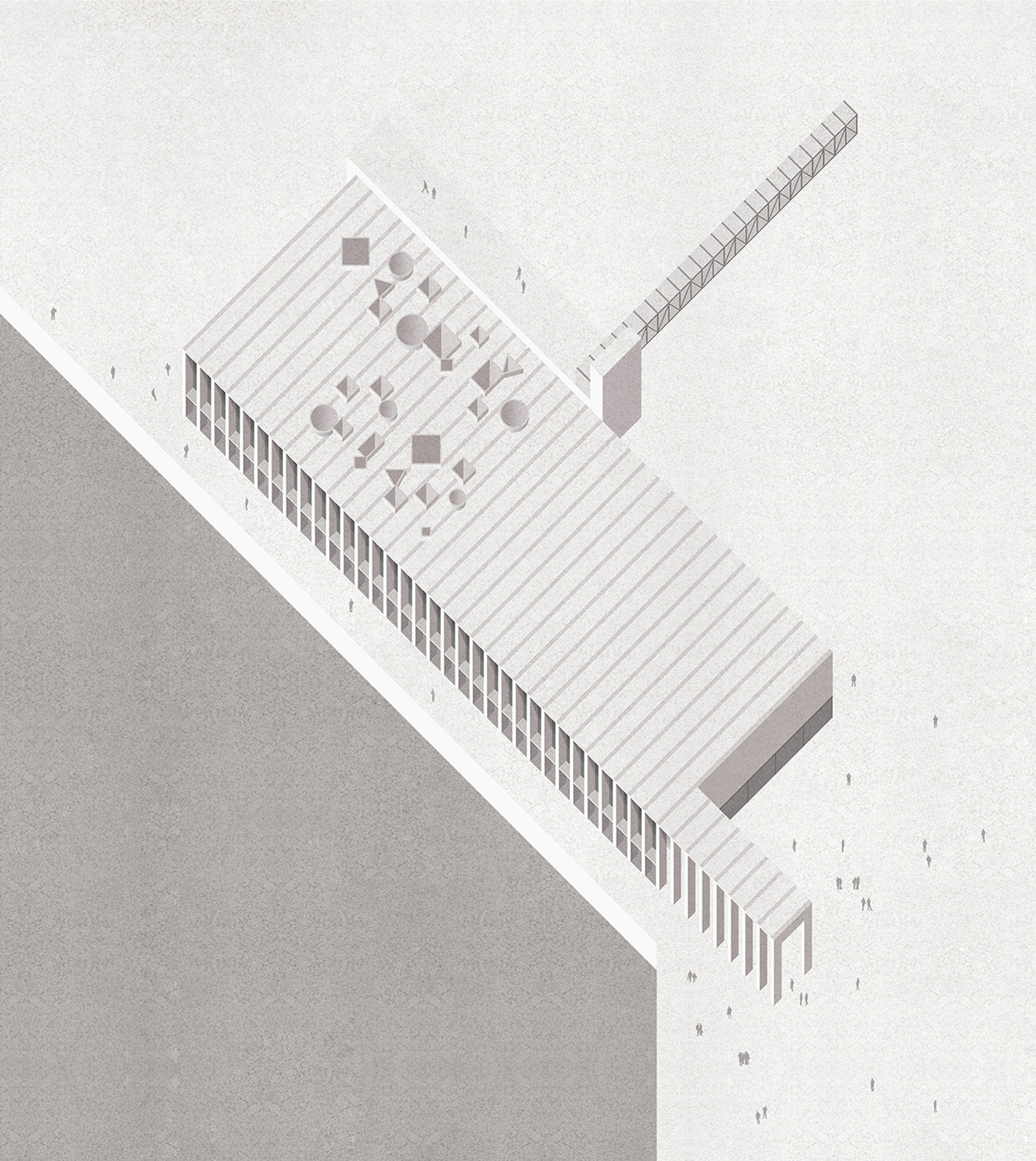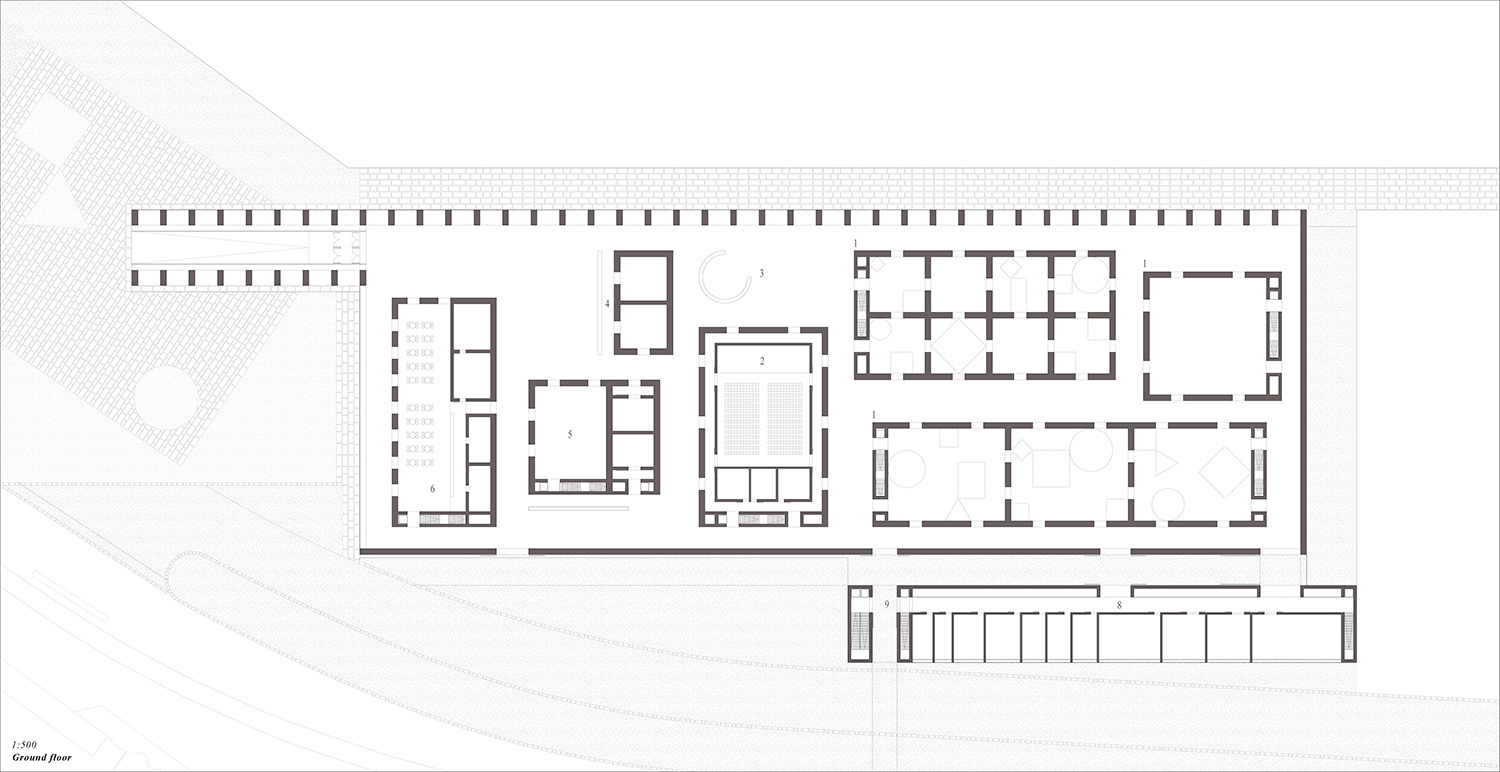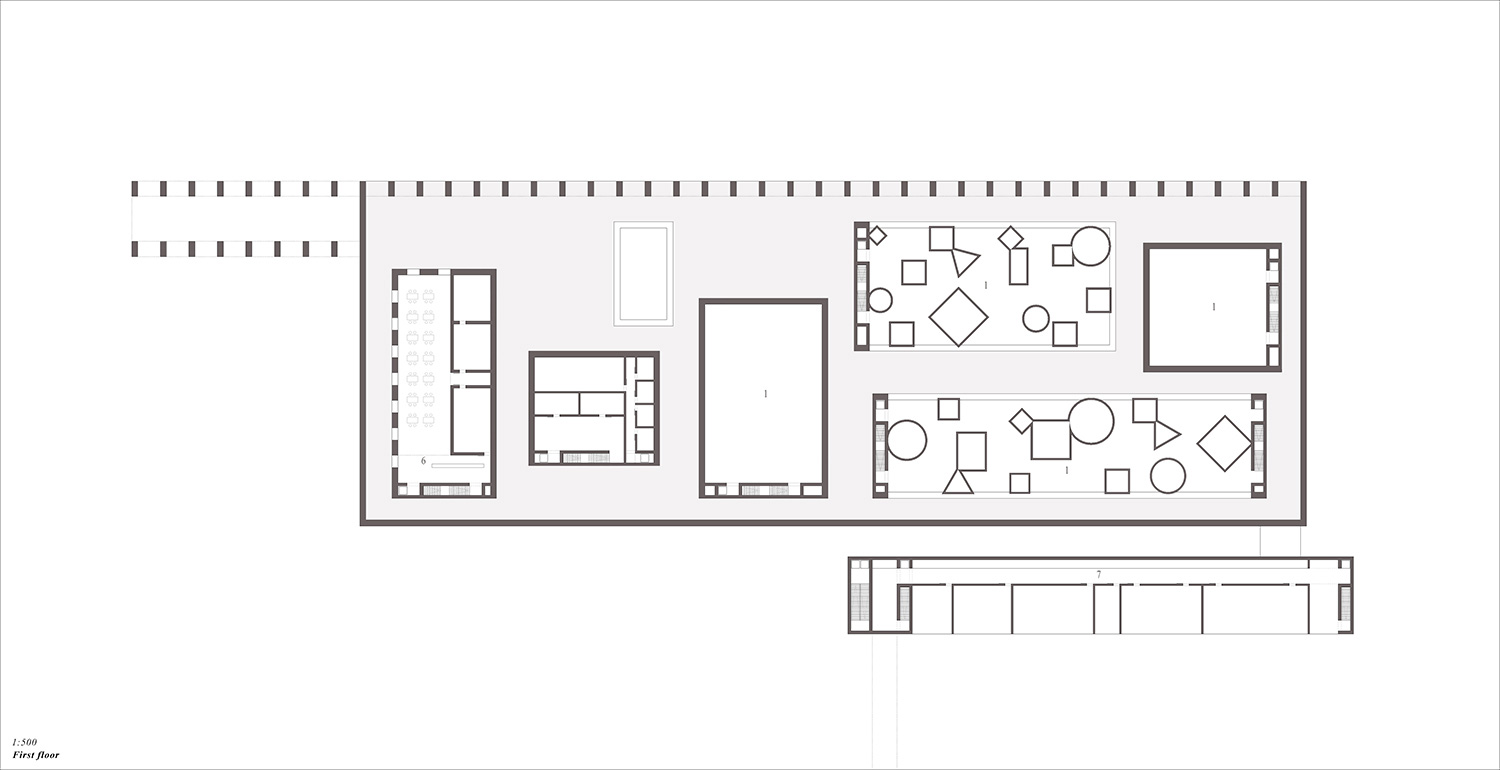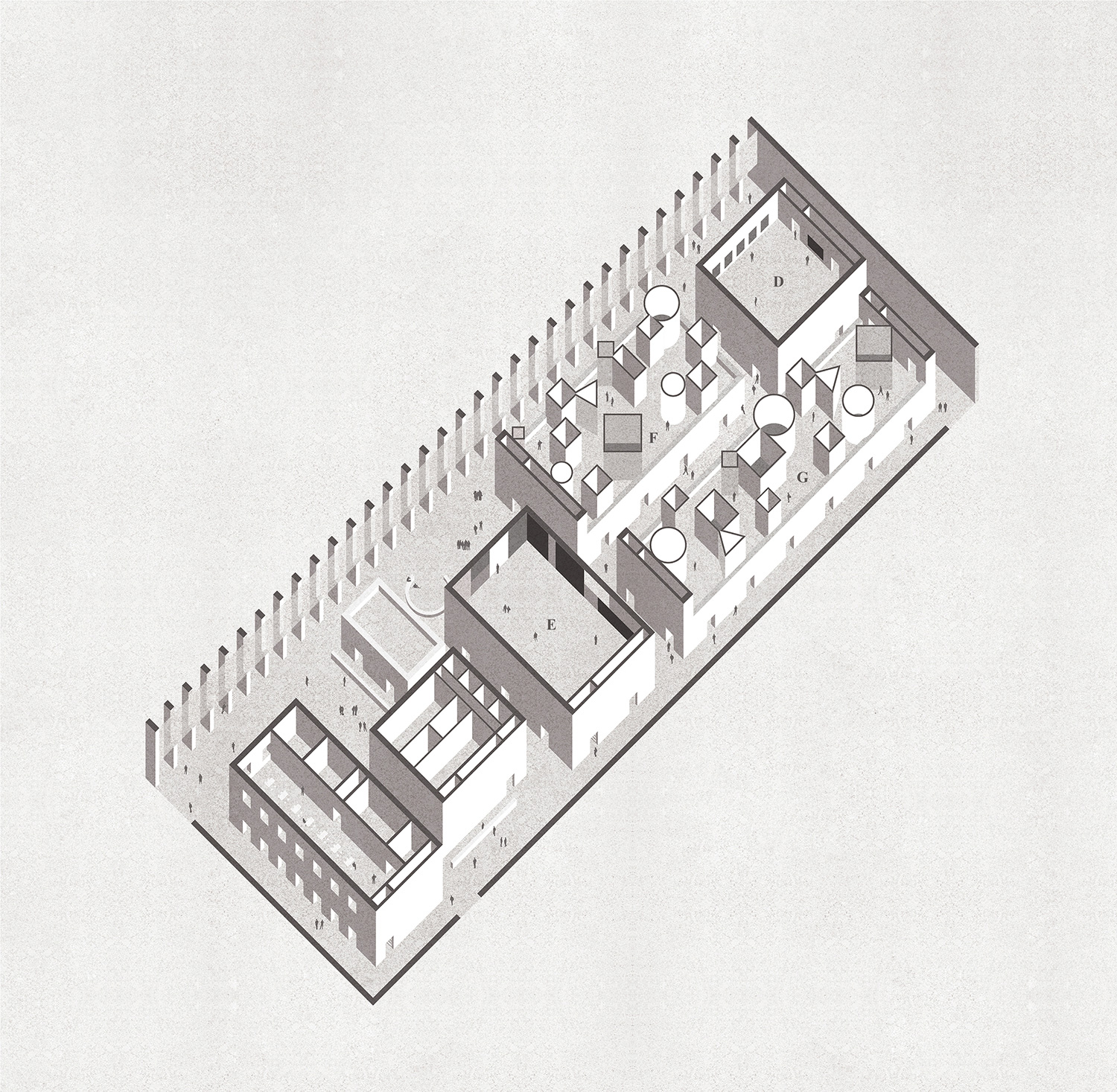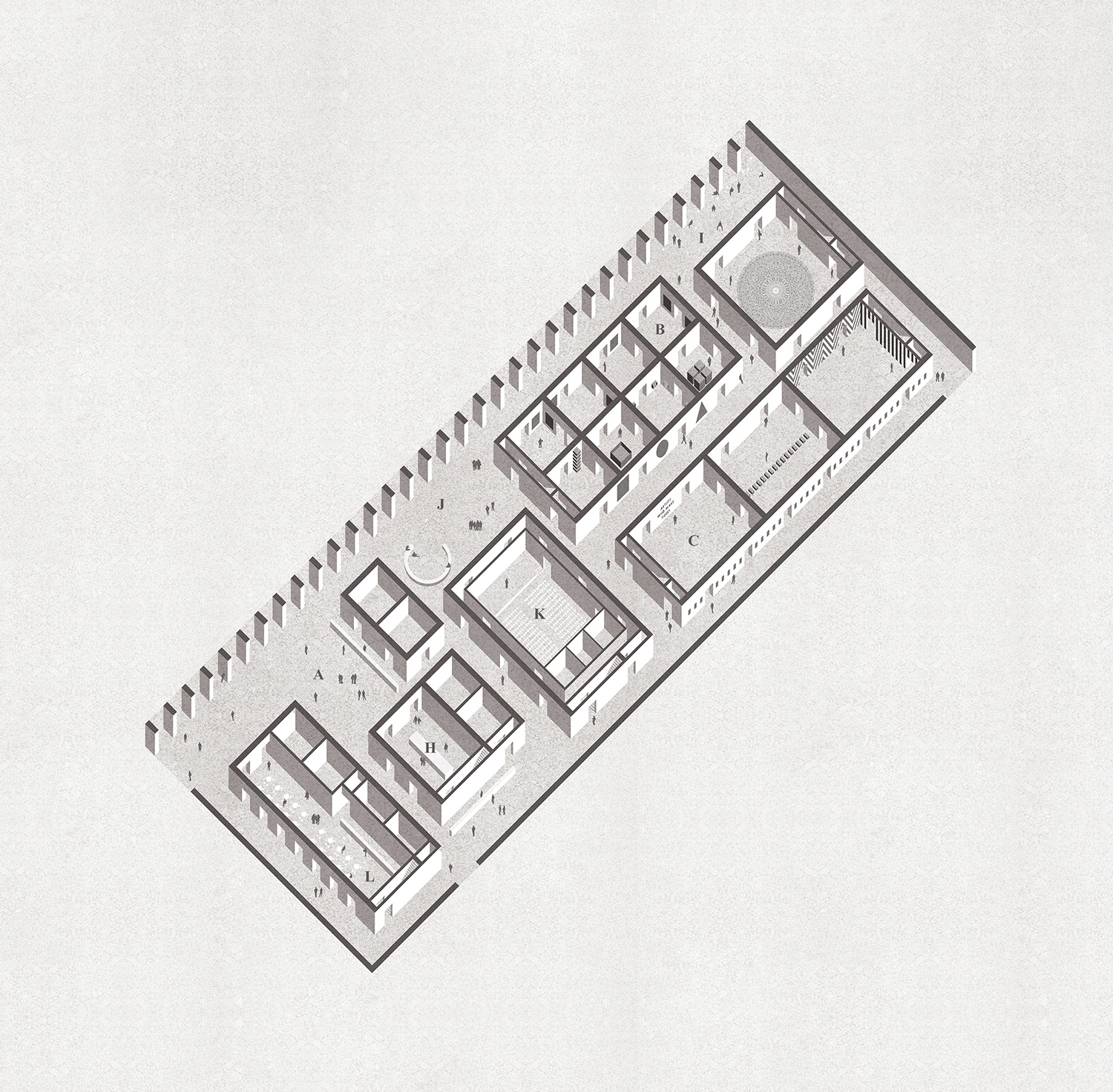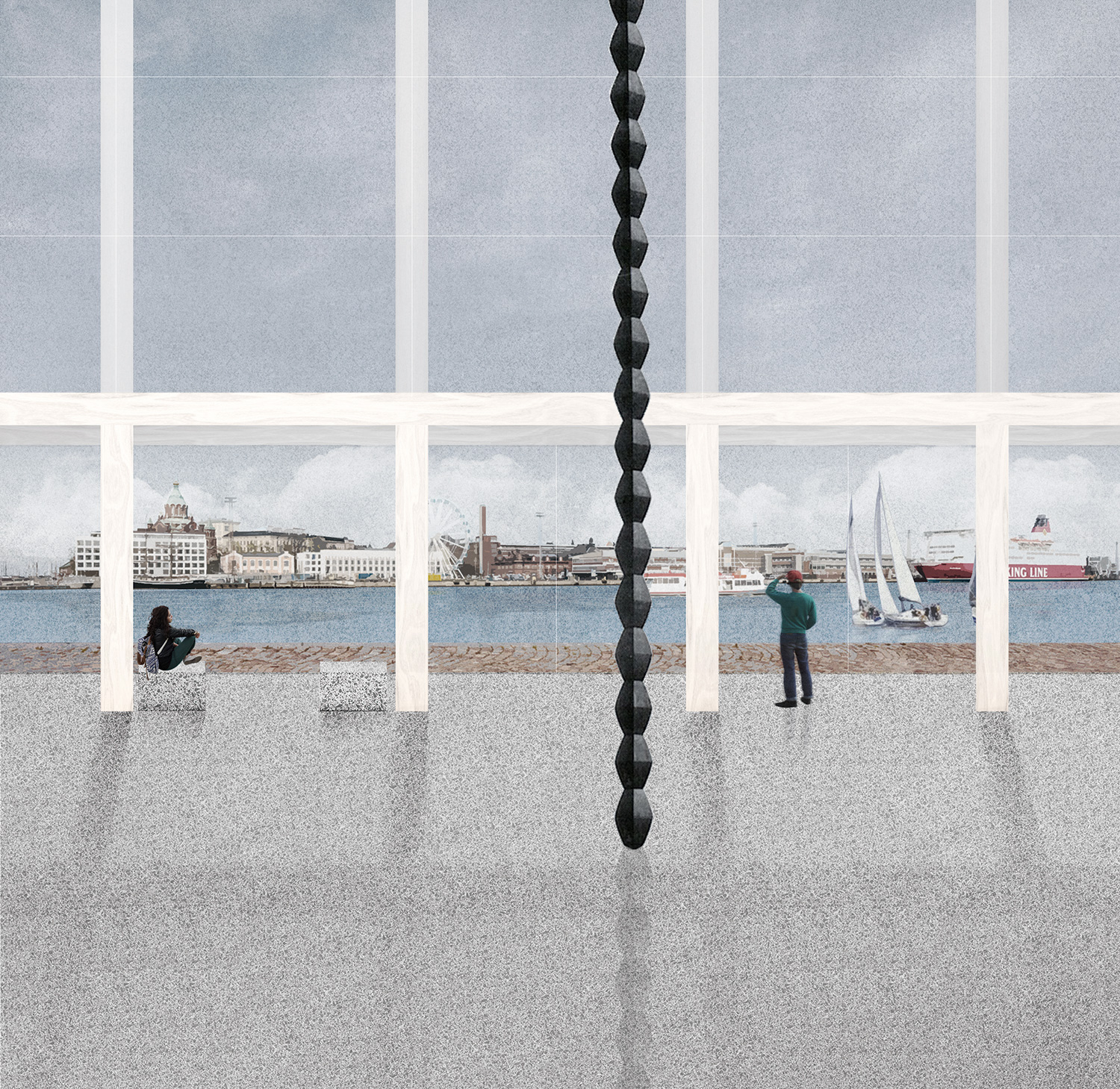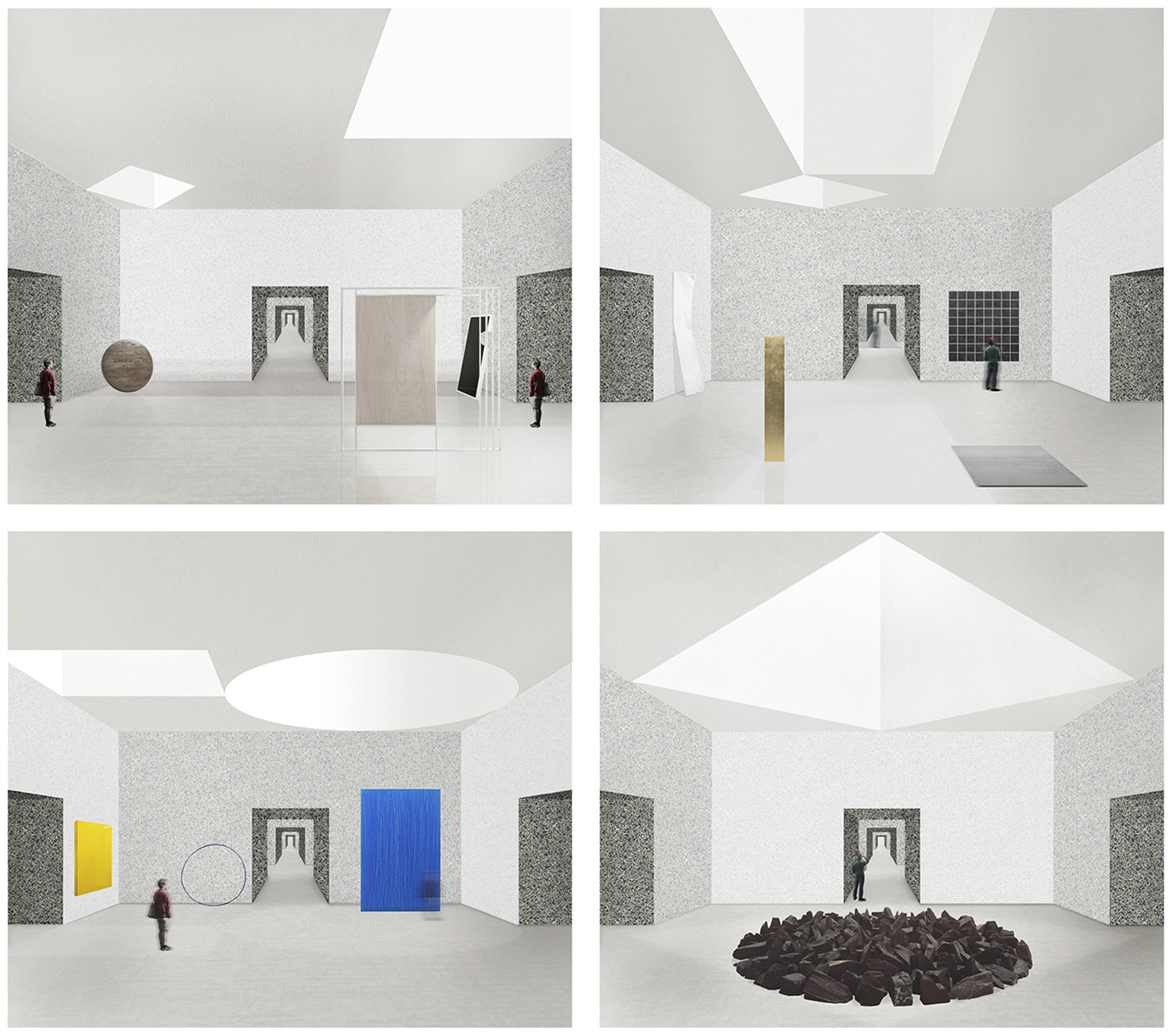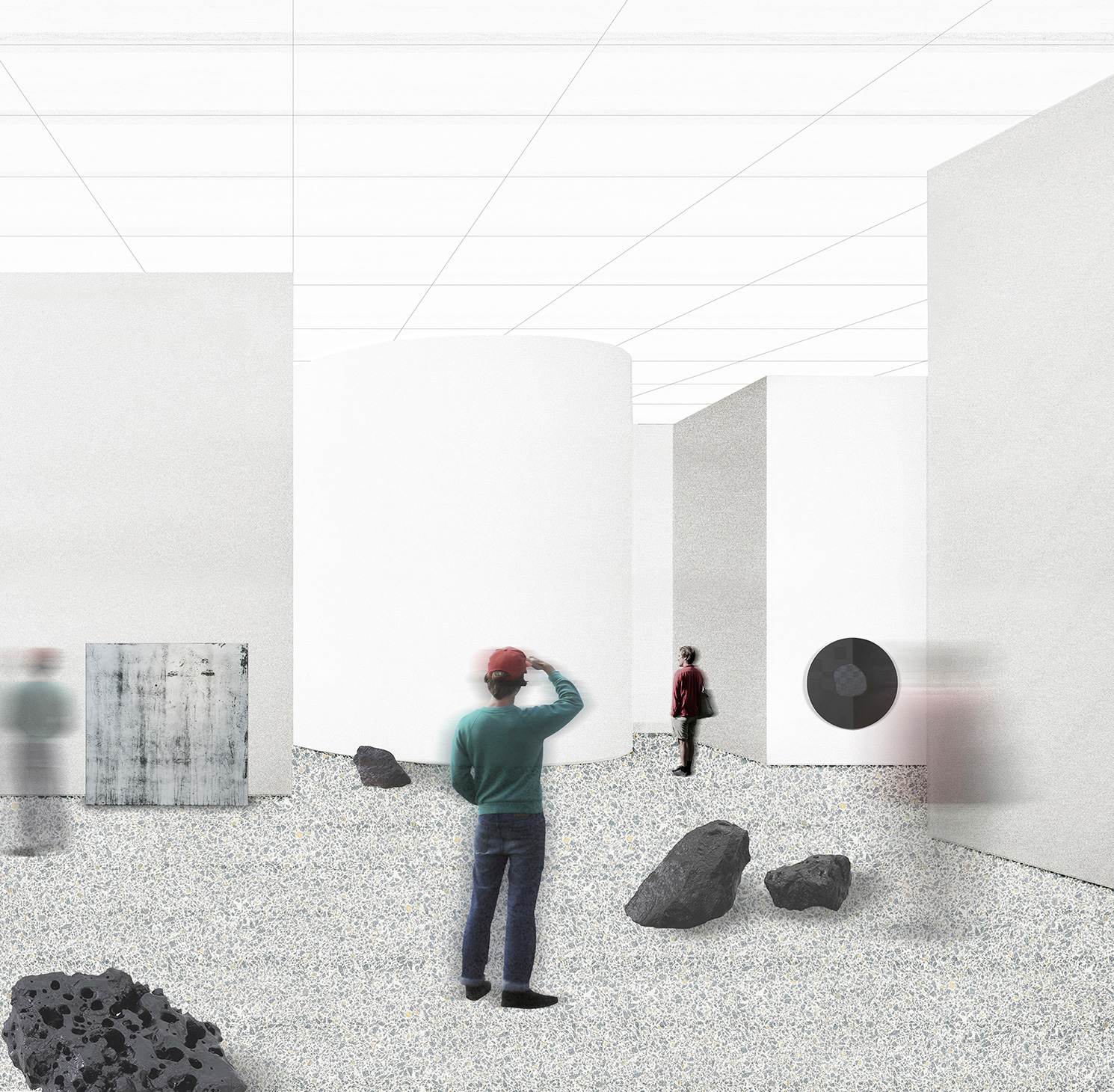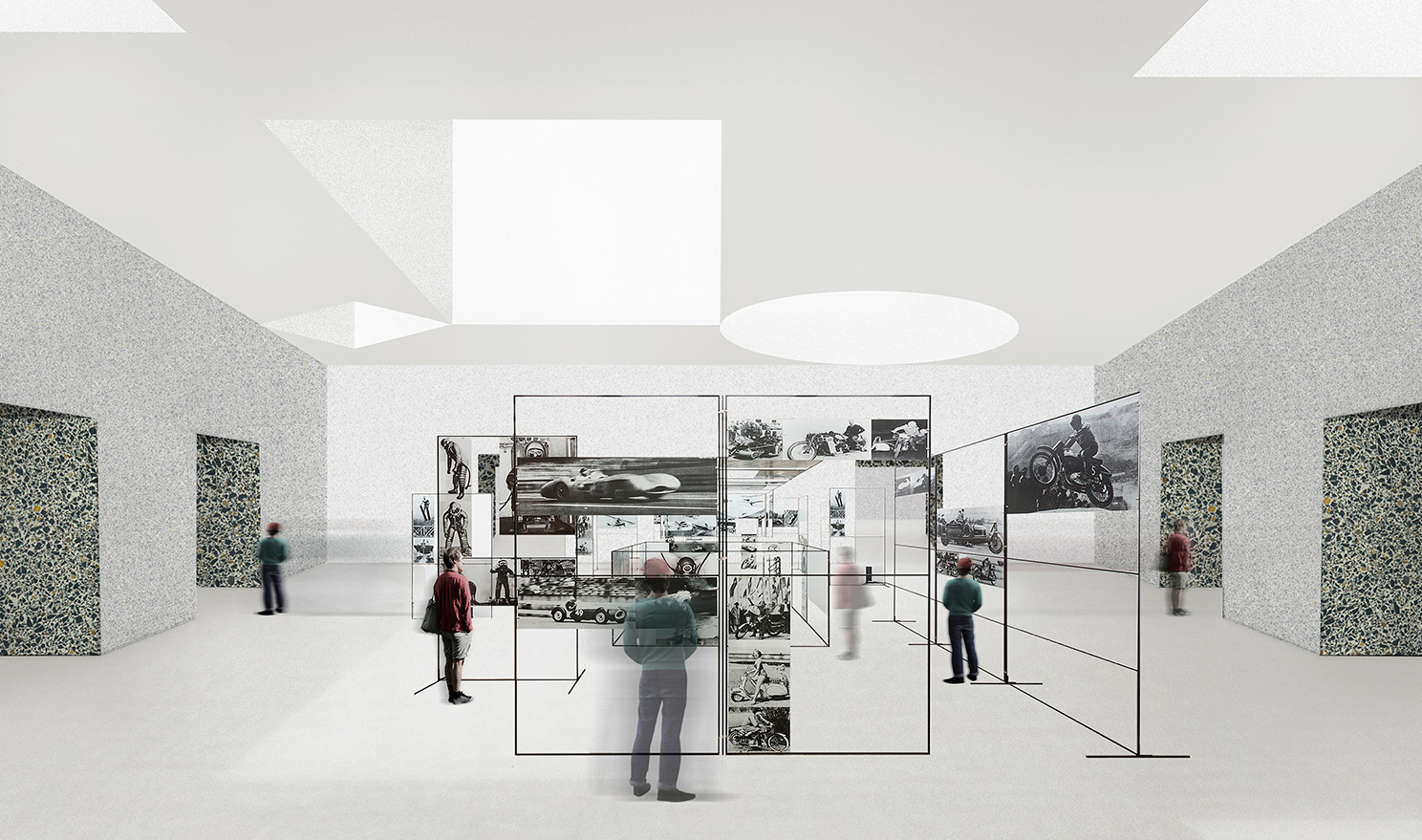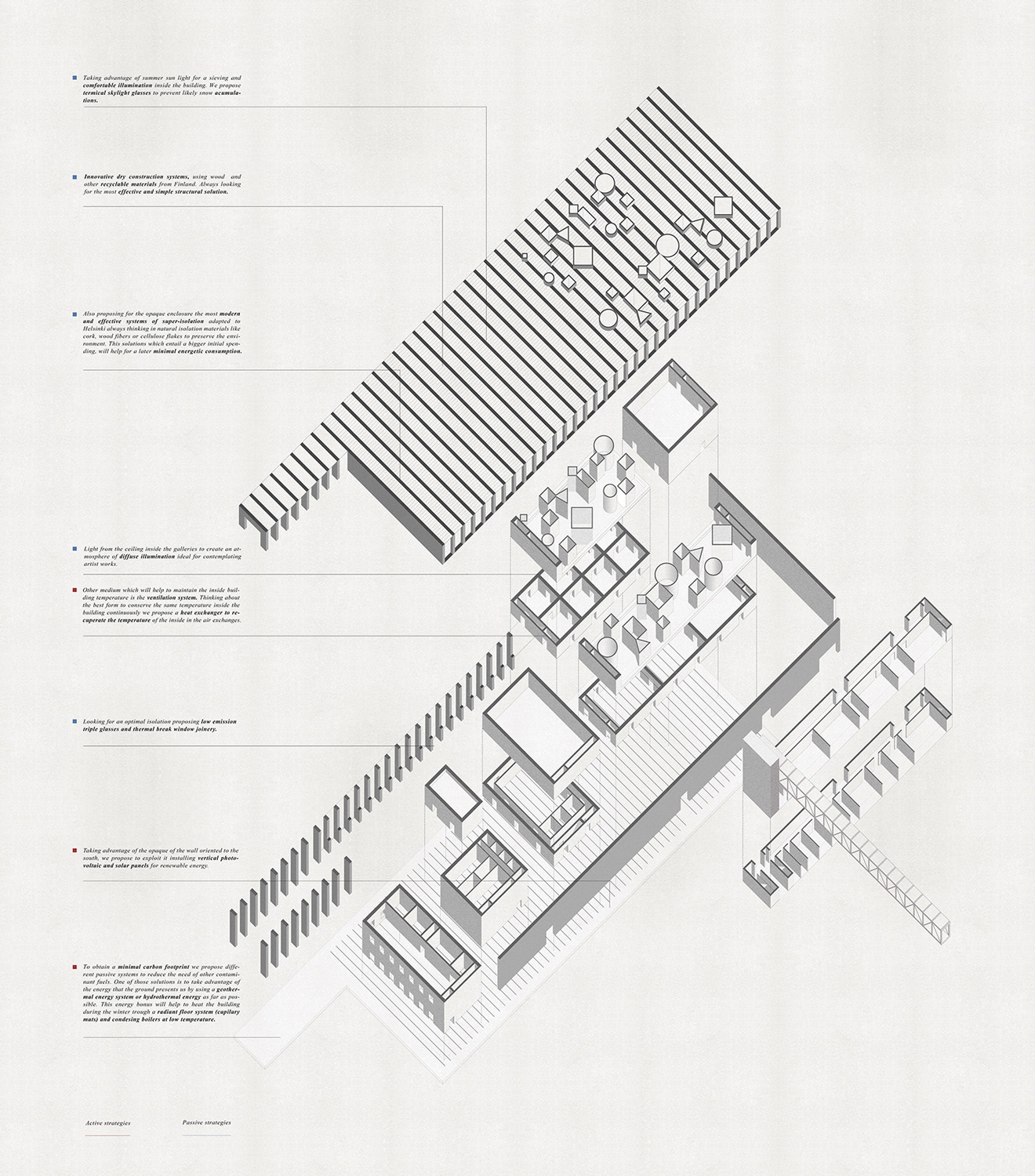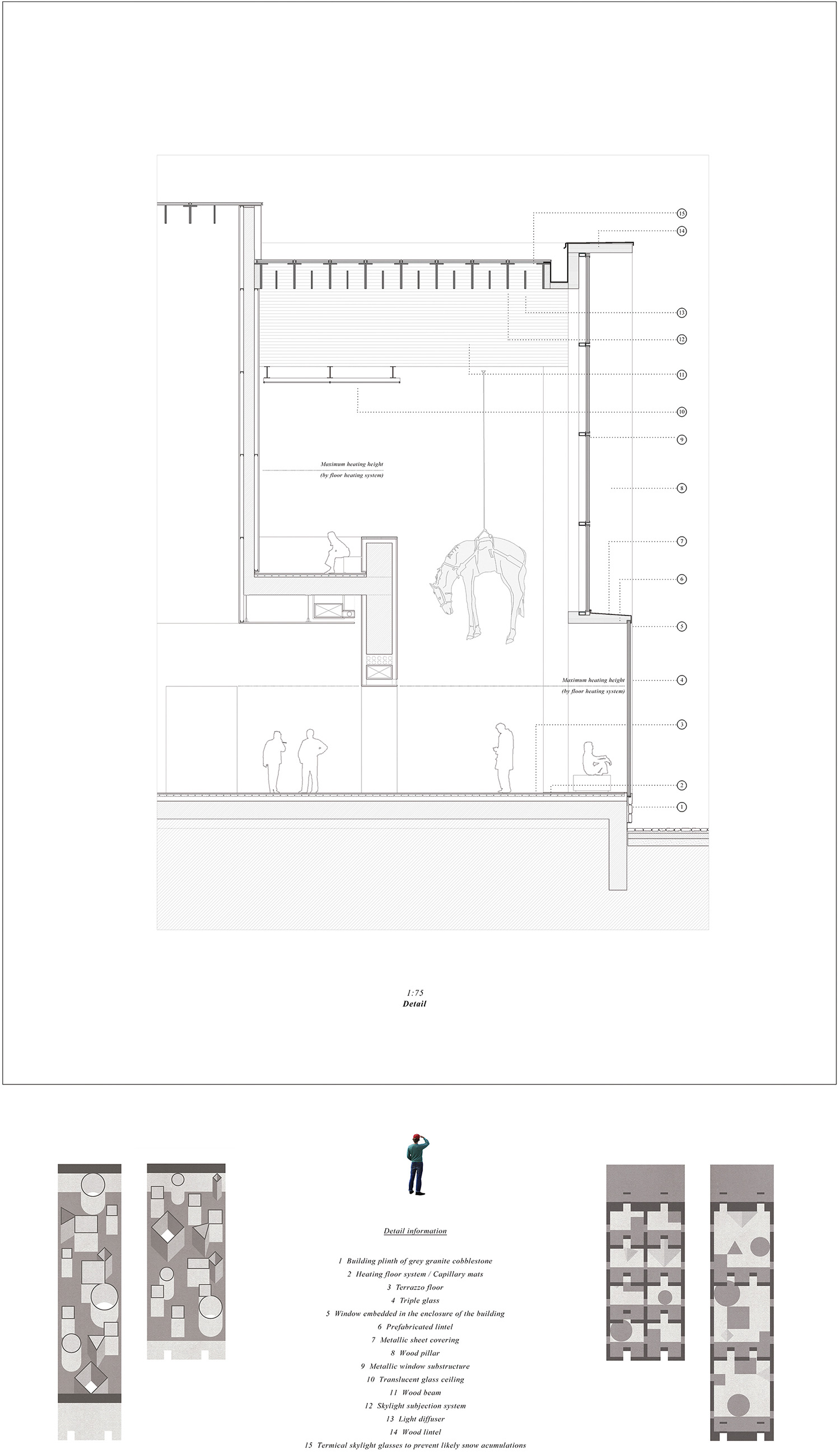☉ Guggenheim Helsinki is a proposal by VIAR estudio for Helsinki Municipality and Guggenheim Foundation in 2014. It is located in Helsinki Finland in a seaside and urban setting. Its scale is large. Review the 21 proposals for the same competition.
Joona liked to approach to Eteläsatama each time he sailed to Helsinki. Leaving Vakosaari port side he saw the new Guggenheim Museum. It seemed to Joona as if the building had always been there, a well-shaped port warehouse, a great portico drawn against the green hill behind.
-Well! – He thought. He decided to visit the Museum.
Once in the city he went to the Museum. He also found suggestive the view from the city: a sort of industrial unit red over the sea. Walking across the pier he arrived to the portico and suddenly he was inside.
His first impressions were assorted; protection, light, sea and multiple tours. At information (A), he asked for the exhibitions and for the best tour to go across the Museum.
-The museums are always a mess! – He told them- Tell me simplest walk.
They suggested Joona various tours and the option to get lost.
-This a Museum to let you go, to lose yourself; go up or down, go in or out, to meditate and get lost- They told him.
He liked the idea. The museum was like a great hall with streets and “houses” within.
-Like a city! – He thought and he started to walk through the streets and go inside the “houses”.
He visited the eight connected rooms (B) with magic light drawing simple geometric figures on the ceiling. Afterwards he strolled through the three rooms (C) where he found some big pieces displayed with an intriguing light flowing from upside. Joona suspected that as well as there were the “house exhibition rooms” –as he mentally identified them- there must be bigger exhibition rooms (D/E), so he looked for them.
One of the most grateful experiences was waiting for Joona at the end of his tour: the upper exhibition rooms (F/G). The projection of the skylights created fluent and articulated spaces. The exhibition he found there where bewitching. The clean geometries built extraordinary places for viewing the pieces.
Once finished his tour he bought a couple of books at the shop (H) and he decided to take some time to think over the exhibitions and scan the new books. The niches/arcade at the seafront gallery (I) invited him to sit and dedicate some time to his own thinking’s. He thought about the museum and his thoughts where pleasant, a sensation of comfort invaded him. His natural aim to fix ideas drove him to new impressions: street, house, museum and again the sea. He felt good.
He heard some voices so he asked about. It was a “happening” held at the atrium (J). After, a lecture will take place at the conference hall (K). He had spare time and attended the events. When leaving the museum he passed by the coffee (L).
Joona was a person involved with environmental issues and before leaving he asked about the maintenance and energy consumption of the museum. He was told that the carbon footprint of the compound was minimal, because the building energy system was highly efficient. The materials used within the buildings provide a high thermal insulation what brings about a low energy request. Geothermal systems, which use the earth heat, are used to reduce the energy consumption.
Since that visit, every time Joona sailed to Helsinki, he saved some time to re-visit the museum. He enjoyed walking by inner streets of the Museum, losing himself and discovering new exhibitions to, finally, sit to read or drink something in front of the bay.

